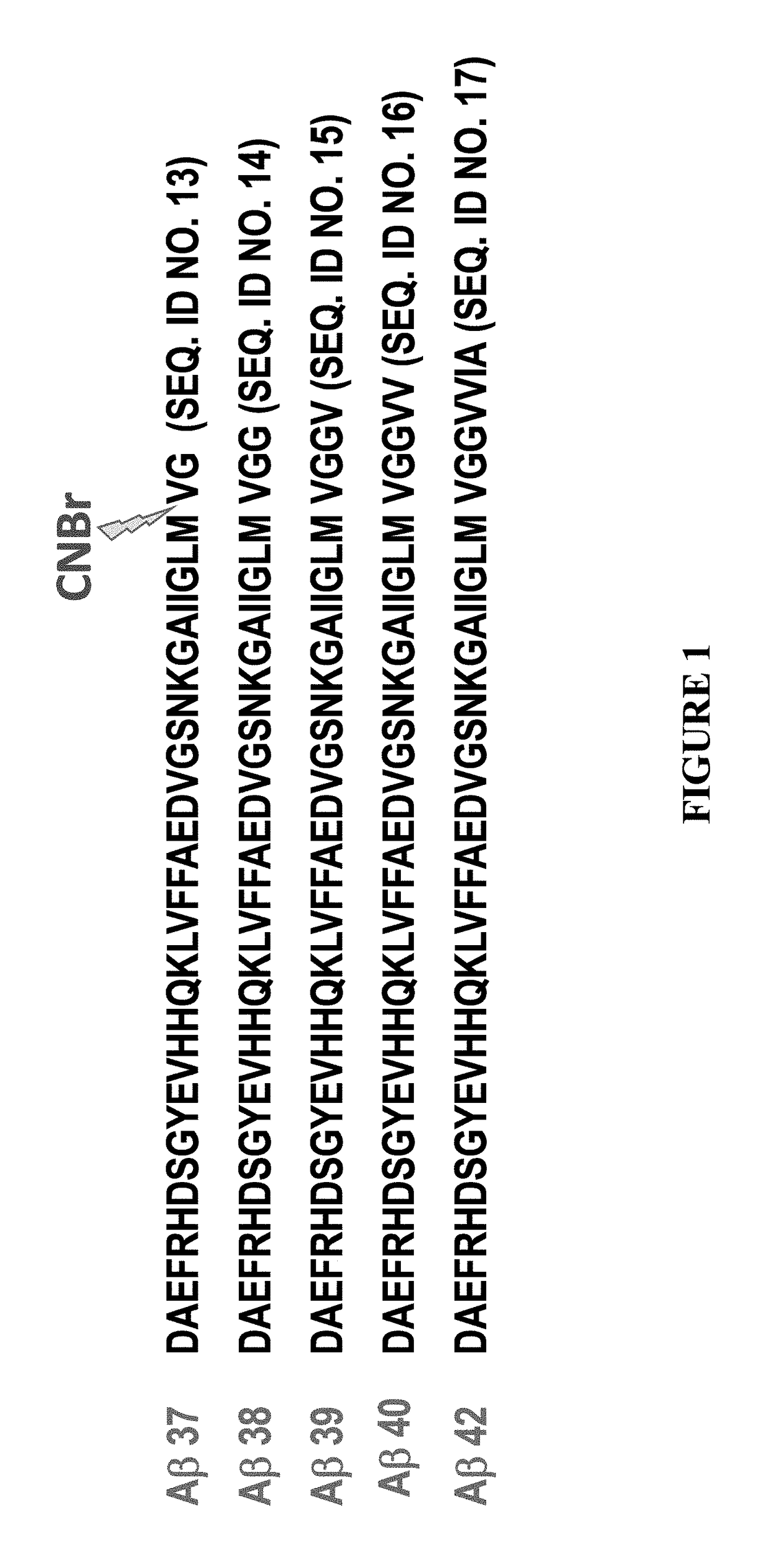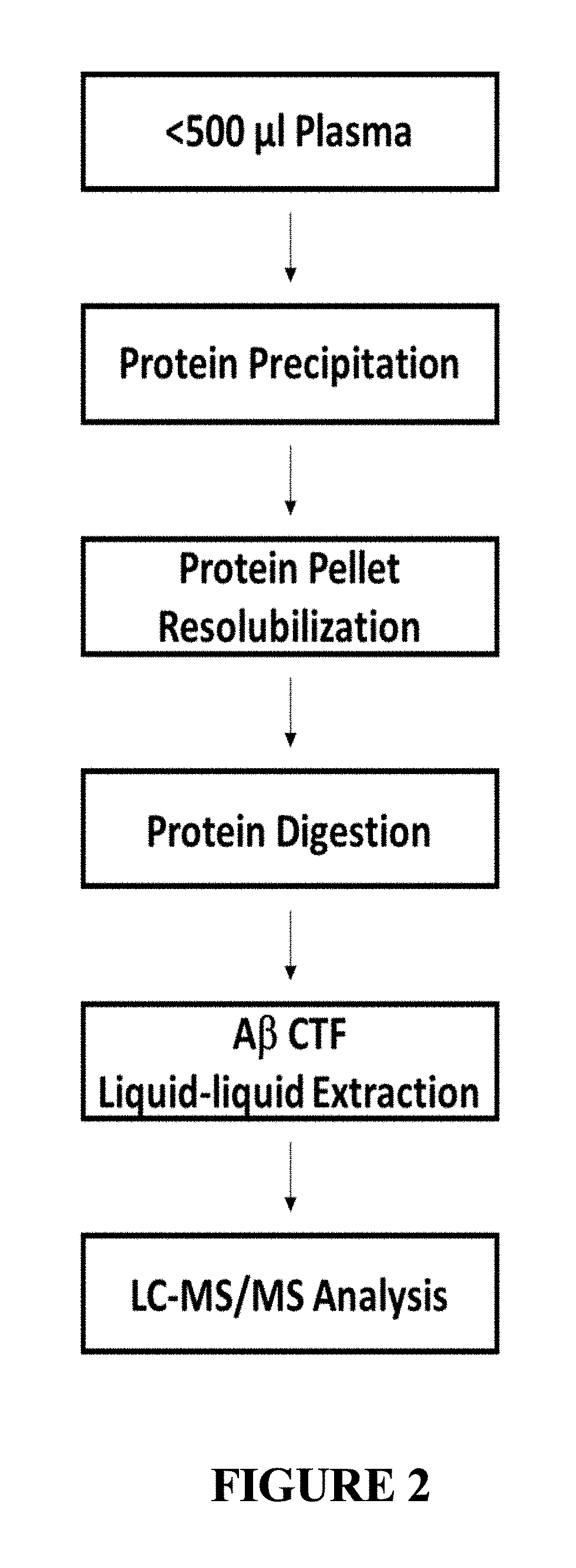Methods for extracting and measuring concentrations of biomolecules in complex matrices without the need for immunocapture
a biomolecule and complex matrices technology, applied in the field of biomolecule extraction from complex matrices, can solve the problems of inability to extract biomolecular targets, and inability to reliably detect and analyze biomolecules
- Summary
- Abstract
- Description
- Claims
- Application Information
AI Technical Summary
Benefits of technology
Problems solved by technology
Method used
Image
Examples
example 1
Quantitation of Endogenous Aβ by SISAQ
[0080]Five separate human plasma QC samples were spiked with uniformly labeled 15N Aβ40 / Aβ42 used as Quantitation Standard at concentrations of 1667 pg / ml and 250 pg / ml, respectively (FIG. 5A). The Aβ isoforms were extracted from the QC samples using precipitation, digested with cyanogen bromide, and the Aβ CTFs were obtained by liquid-liquid extraction. The resulting extracts were dried down, peptides were cleaned up by solid phase extraction, and then analyzed by liquid chromatography-mass spectrometry (LC-MS). The top two and the top four most abundant fragment ions were monitored for the Aβ40 and Aβ42 CTFs, respectively. The amount of unlabeled, endogenous Aβ relative to the known amount of corresponding Quantitation Standard (ratio of their summed fragment ion signal intensities) was calculated for all the samples and were quantified using 7-point calibration curves for the Aβ40 and Aβ42 CTFs (FIGS. 3A and 3B). The concentrations in plasma ...
example 2
Identification of Plasma Proteins by CNBr Digestion and Liquid-Liquid Extraction
[0083]To demonstrate the utility of the invention and its application for identifying and quantifying other biomolecules in addition to Aβ, 500 μL aliquots of human plasma were prepared as described herein, and analyzed using liquid chromatography-mass spectrometry. Briefly, plasma proteins were precipitated, resolubilized, and digested with cyanogen bromide. The digestion reactions underwent liquid-liquid extraction with a series of organic solvents varying in polarity. Those skilled in the art will recognize that many different organic solvents, or combinations thereof, can be used in this extraction step, and the identity of the organic solvent(s) will be determined by the type of analyzer the user selects for detecting, identifying, characterizing, and quantifying the biomolecule(s) of interest. In this example, extracted fractions were dried down and analyzed by high-resolution LC-MS / MS operating in...
PUM
| Property | Measurement | Unit |
|---|---|---|
| concentrations | aaaaa | aaaaa |
| concentrations | aaaaa | aaaaa |
| concentration | aaaaa | aaaaa |
Abstract
Description
Claims
Application Information
 Login to View More
Login to View More - R&D
- Intellectual Property
- Life Sciences
- Materials
- Tech Scout
- Unparalleled Data Quality
- Higher Quality Content
- 60% Fewer Hallucinations
Browse by: Latest US Patents, China's latest patents, Technical Efficacy Thesaurus, Application Domain, Technology Topic, Popular Technical Reports.
© 2025 PatSnap. All rights reserved.Legal|Privacy policy|Modern Slavery Act Transparency Statement|Sitemap|About US| Contact US: help@patsnap.com



